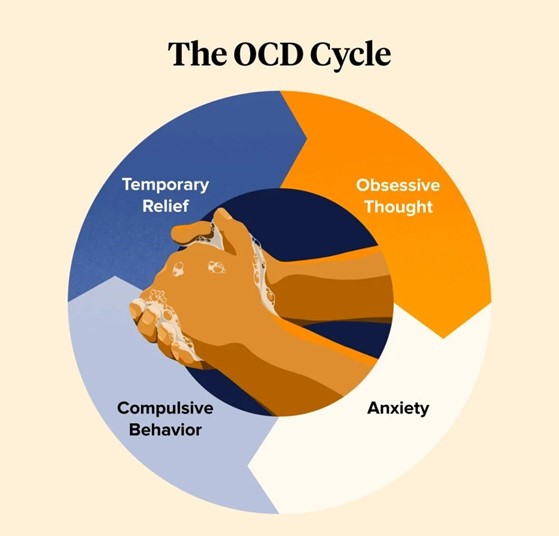The nurse is collecting data from a client with obsessive-compulsive disorder (OCD). Which of the following findings should the nurse expect? (Select all that apply.)
Irrational fear of certain objects
Difficulty relaxing
Unaware of compulsions
Rule-conscious behavior
Perfectionist behavior
Correct Answer : B,D,E
The client with OCD may experience difficulty relaxing and often feels tense, anxious, and irritable. They may engage in rule-conscious behavior and exhibit perfectionist tendencies, as well as experience compulsive behaviors. These behaviors may be time-consuming and interfere with daily activities.

Option A is incorrect because irrational fear of certain objects is more indicative of a phobia than OCD.
Option C is incorrect because clients with OCD are usually aware of their compulsions and may even try to resist them.
Reasons why the other options are not correct answers:
Option A: Irrational fear of certain objects is more indicative of a phobia than OCD.
Option C: Clients with OCD are usually aware of their compulsions and may even try to resist them.
Nursing Test Bank
Naxlex Comprehensive Predictor Exams
Related Questions
Correct Answer is B
Explanation
Answer: B. 6-year-old child who has a spiral fracture of the tibia and fibula, which reportedly occurred while riding a bicycle.
Rationale:
A) 3-year-old toddler with scalding burns over the face and chest reportedly sustained when the child pulled on a tablecloth, spilling a cup of tea on himself:
Scalding burns in young children can be accidental, especially if the burns are consistent with typical patterns seen in such accidents. However, burns covering a large area, especially on the face and chest, may warrant further investigation to rule out abuse, particularly if the explanation seems inconsistent with the injury.
B) 6-year-old child who has a spiral fracture of the tibia and fibula, which reportedly occurred while riding a bicycle:
A spiral fracture is often associated with a twisting or rotational force, which is less common in typical bicycle accidents. Spiral fractures in children can be indicative of physical abuse, particularly if the explanation for the injury does not fit the typical mechanisms of injury associated with the reported activity. This type of fracture should prompt a thorough evaluation for possible abuse.
C) 14-month-old toddler who is reportedly learning to walk and has several bruises on bony prominences of the lower legs and elbows:
Bruises on bony prominences are common in toddlers who are learning to walk and are prone to minor falls. This pattern of bruising is usually consistent with typical developmental activities rather than abuse. However, repeated or severe bruising should still be evaluated carefully.
D) 9-month-old infant who sustained near drowning when he reportedly climbed into the tub and turned on the water:
While near drowning in an infant is a serious concern, it is less likely to be related to physical abuse if the explanation involves an accidental event. A thorough assessment is necessary to ensure safety and prevent further incidents, but the described scenario is not as indicative of abuse as a spiral fracture.
Correct Answer is D
Explanation
Validation. Validation is a therapeutic technique that involves acknowledging and accepting the feelings and emotions of the person with dementia, even if they are not based on reality. Validation helps to reduce agitation and anxiety and promotes dignity and respect.
The other choices are not correct for the following reasons:
Remotivation is a technique that aims to stimulate the person's interest in the present and future, by providing factual information and encouraging participation in activities. Remotivation may not be appropriate for someone who is agitated and living in the past.
Orientation to reality is a technique that involves correcting the person's misperceptions and confusions, by providing factual information about time, place, and identity. Orientation to reality may increase agitation and frustration and may damage the person's self-esteem.
Guided imagery is a technique that involves using mental images to promote relaxation and well-being. Guided imagery may not be effective for someone who has difficulty with attention, concentration and memory.
Whether you are a student looking to ace your exams or a practicing nurse seeking to enhance your expertise , our nursing education contents will empower you with the confidence and competence to make a difference in the lives of patients and become a respected leader in the healthcare field.
Visit Naxlex, invest in your future and unlock endless possibilities with our unparalleled nursing education contents today
Report Wrong Answer on the Current Question
Do you disagree with the answer? If yes, what is your expected answer? Explain.
Kindly be descriptive with the issue you are facing.
